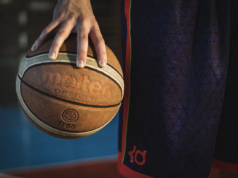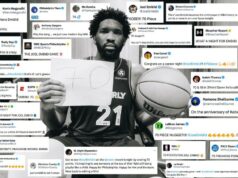A successful NBA defense requires many separate moving pieces to cooperate. A team could be proficient at forcing turnovers, but allow their opponents to shoot high-quality shots too often, and would be a sub-par defense. Another team could excel at limiting opponent’s shots from high-quality spots, such as the corners and at the rim, but be a poor rebounding team, and thus would be a mediocre defense. To execute high-quality defense, it is not enough for a player or team to just understand the defensive scheme they are trying to implement, but to have the ability to execute them as well. In the modern NBA, frequent switching has become a defensive scheme commonly used against small lineups, however, there are many players who are not equipped to switch onto players outside of their position. Realizing how many factors have to work together to produce a high-level NBA defense helps give context to how remarkable the San Antonio Spurs’ run of elite defensive teams have been over the past couple of decades, especially when considering the change of personnel and shifting styles of play prevailing in the NBA.
One of the key defensive philosophies that the Spurs have implemented throughout the years that has helped keep their defense steady this season as well is limiting fouls committed. The reason why limiting fouls improves defense is fairly obvious: if a player is an 80% free throw shooter, giving him two free throws results in a possession with an expected value of 1.60 points. The NBA’s leading offense according the CleaningTheGlass.com, the Houston Rockets, scores 1.16 points per possession. In other words, free throws are generally a highly efficient way for possessions to end for an offense.
Defensive free throw rate, which measures the amount of free throws a team allows every 100 field goal attempts its opponents shoot, provides a view on how effective a team is in preventing opponent free throw attempts while factoring out pace. The Spurs rank fourth in that category so far this season, allowing only 16.1 free throw attempts per 100 opponent field goal attempts. The distance between them and first, however, is almost half of the distance between them and the fifth ranked team.
The Spurs’ big men, LaMarcus Aldridge and Pau Gasol, have been adept at not fouling this season, ranking in the 82nd and 86th percentile, respectively, among all bigs in foul% – the percentage of plays a player ends up fouling in. Keeping foul numbers down is generally more challenging for bigs in particular as so many fouls happen at the rim where most players are not only looking for their shot, but looking to draw a foul as well. To be a high level defender in the paint then, bigs are tasked with contesting shots while committing as few fouls as possible.
Kyle Anderson and Danny Green also rank high positionally in limiting their fouls, which is impressive given both players relatively high steal rates as well. To be able to force turnovers while not sending opponents to the free throw line is a valuable skill for any defender, but especially perimeter defenders.
With an emphasis on limiting opponents free throw attempts, the Spurs are able to diminish one avenue for easy points on defense. Their ability to execute their long held defensive philosophies even while missing key personnel has allowed them to continue to produce a high-level defense even before one of the NBA’s best defenders suits for up a single game.
All stats are from CleaningTheGlass.com






